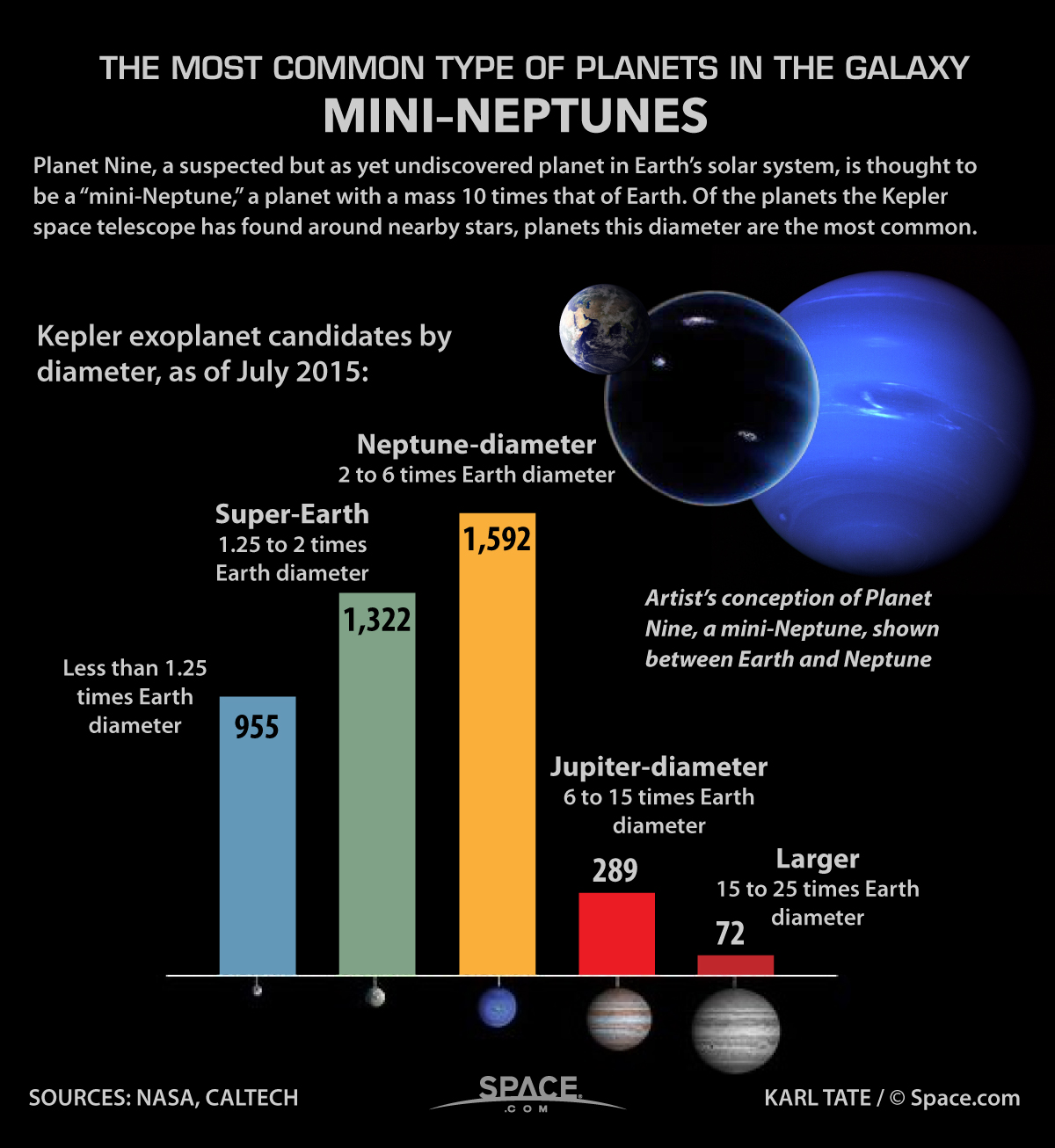'Planet Nine'-Type Worlds Are the Most Common Ones We Know (Infographic)

On Jan. 20, 2016, scientists announced the discovery of what could be a giant planet in the Kuiper Belt at the outer edge of our solar system. Nicknamed "Planet Nine," the world about 10 times the mass of the Earth and would take between 10,000 and 20,000 years to orbit the sun. Such mini-Neptunes may actually outnumber most other planets in our galaxy, scientists say.
Discovery Story: 'Planet Nine' May Exist: New Evidence for Another World in Our Solar System
The Evidence for 'Planet Nine' in Our Solar System (Gallery)
Planet X May Be Real - Evidence Mounting For 9th Planet | Video
A New Giant Planet In Our Solar System? Evidence Mounts | Video
Breaking space news, the latest updates on rocket launches, skywatching events and more!
Join our Space Forums to keep talking space on the latest missions, night sky and more! And if you have a news tip, correction or comment, let us know at: community@space.com.

Karl's association with Space.com goes back to 2000, when he was hired to produce interactive Flash graphics. From 2010 to 2016, Karl worked as an infographics specialist across all editorial properties of Purch (formerly known as TechMediaNetwork). Before joining Space.com, Karl spent 11 years at the New York headquarters of The Associated Press, creating news graphics for use around the world in newspapers and on the web. He has a degree in graphic design from Louisiana State University and now works as a freelance graphic designer in New York City.
